👶 Developmental Psychology: Essential Concepts for Reading Comprehension
Developmental psychology focuses on the growth and changes that occur throughout a person’s life, from infancy to adulthood. It examines how cognitive, emotional, social, and physical development are influenced by biological and environmental factors. RC passages on developmental psychology often explore prominent theories, key milestones, and debates like nature vs. nurture. By mastering these concepts, readers can analyze the complex processes that shape human behavior and development.
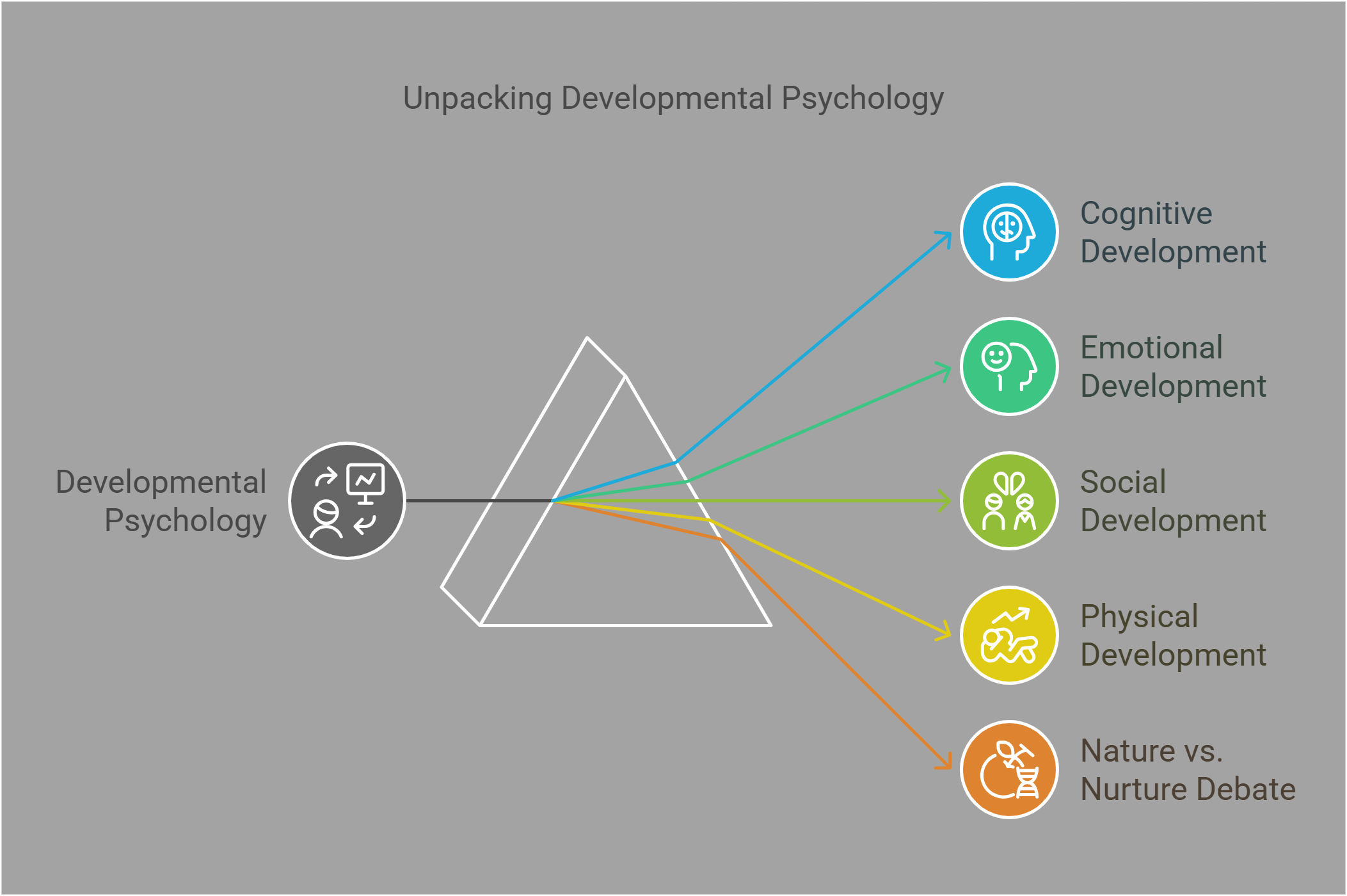
📋 Overview
This guide explores the following essential developmental psychology concepts:
- Piaget’s Stages of Development
- Attachment Styles
- Erikson’s Psychosocial Stages
- Nature vs. Nurture
- Parenting Styles
- Critical Period Hypothesis
- Kohlberg’s Moral Development
- Adolescent Egocentrism
- Neurodevelopmental Disorders
- Theory of Mind
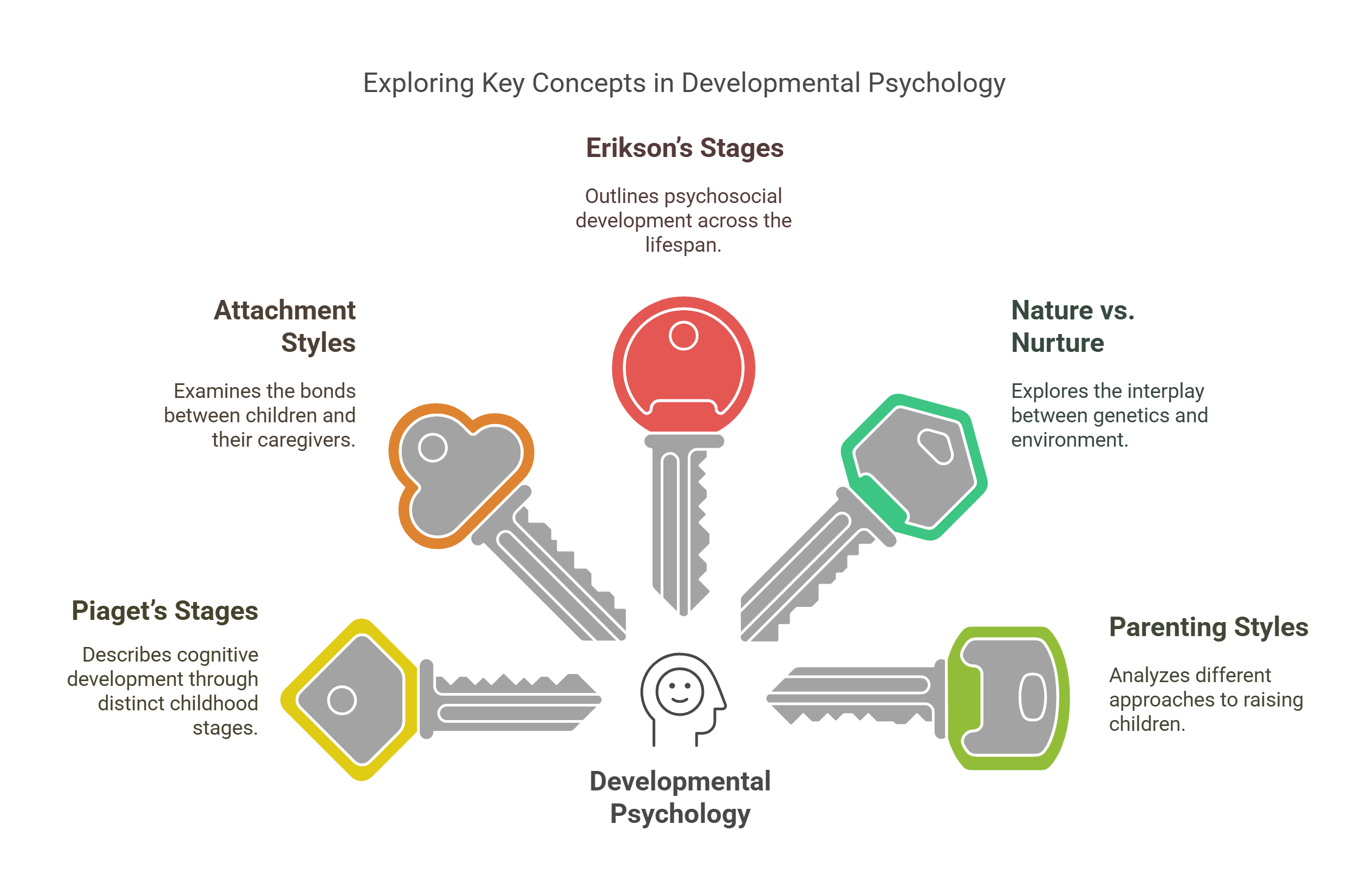
🔍 Detailed Explanations
1. Piaget’s Stages of Development
Jean Piaget proposed a theory outlining how children develop cognitive abilities through four distinct stages. Each stage represents a shift in how children perceive and interact with the world.
- Stages:
- Sensorimotor Stage (0–2 years): Learning through sensory input and motor actions; development of object permanence.
- Preoperational Stage (2–7 years): Egocentric thinking; use of symbols and language to represent objects.
- Concrete Operational Stage (7–11 years): Logical thinking about concrete objects; mastery of conservation tasks.
- Formal Operational Stage (12+ years): Abstract reasoning and hypothetical thinking.
📘 Example: A child in the preoperational stage struggles to see another’s perspective during a conversation.
Explained Simply: Piaget’s stages are like stepping stones, each representing a new level of thinking and understanding the world.
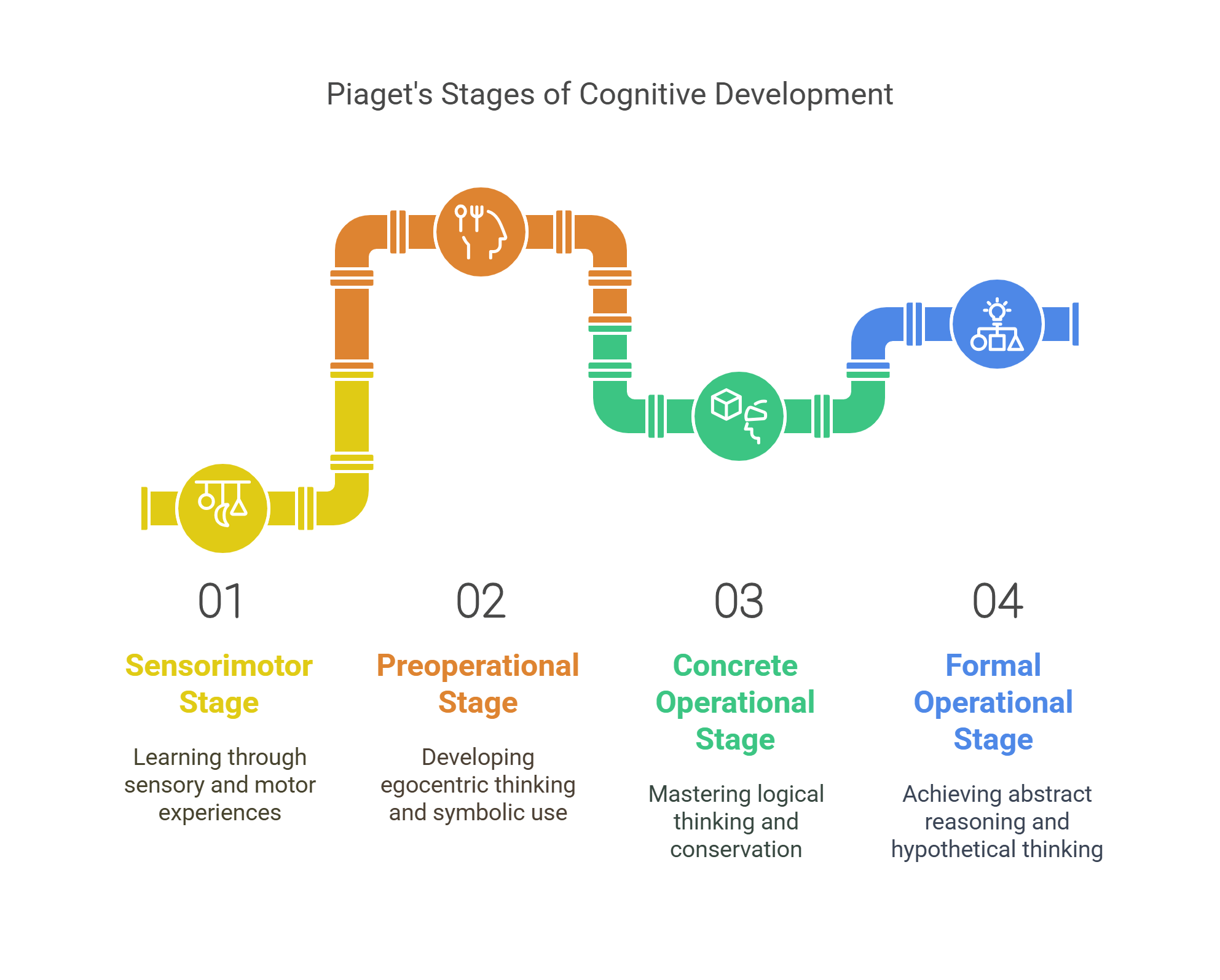
2. Attachment Styles
Developed by John Bowlby and Mary Ainsworth, attachment theory explores the bonds formed between infants and caregivers. These bonds influence emotional and social development.
- Attachment Styles:
- Secure Attachment: Trust in caregivers; leads to healthy relationships.
- Avoidant Attachment: Emotional detachment; avoidance of intimacy.
- Anxious Attachment: Fear of abandonment; clingy behavior.
- Disorganized Attachment: Inconsistent behavior due to trauma or neglect.
📘 Example: A securely attached child explores a room but returns to the caregiver for reassurance.
Explained Simply: Attachment styles are like the foundation of a house—they influence stability and relationships later in life.
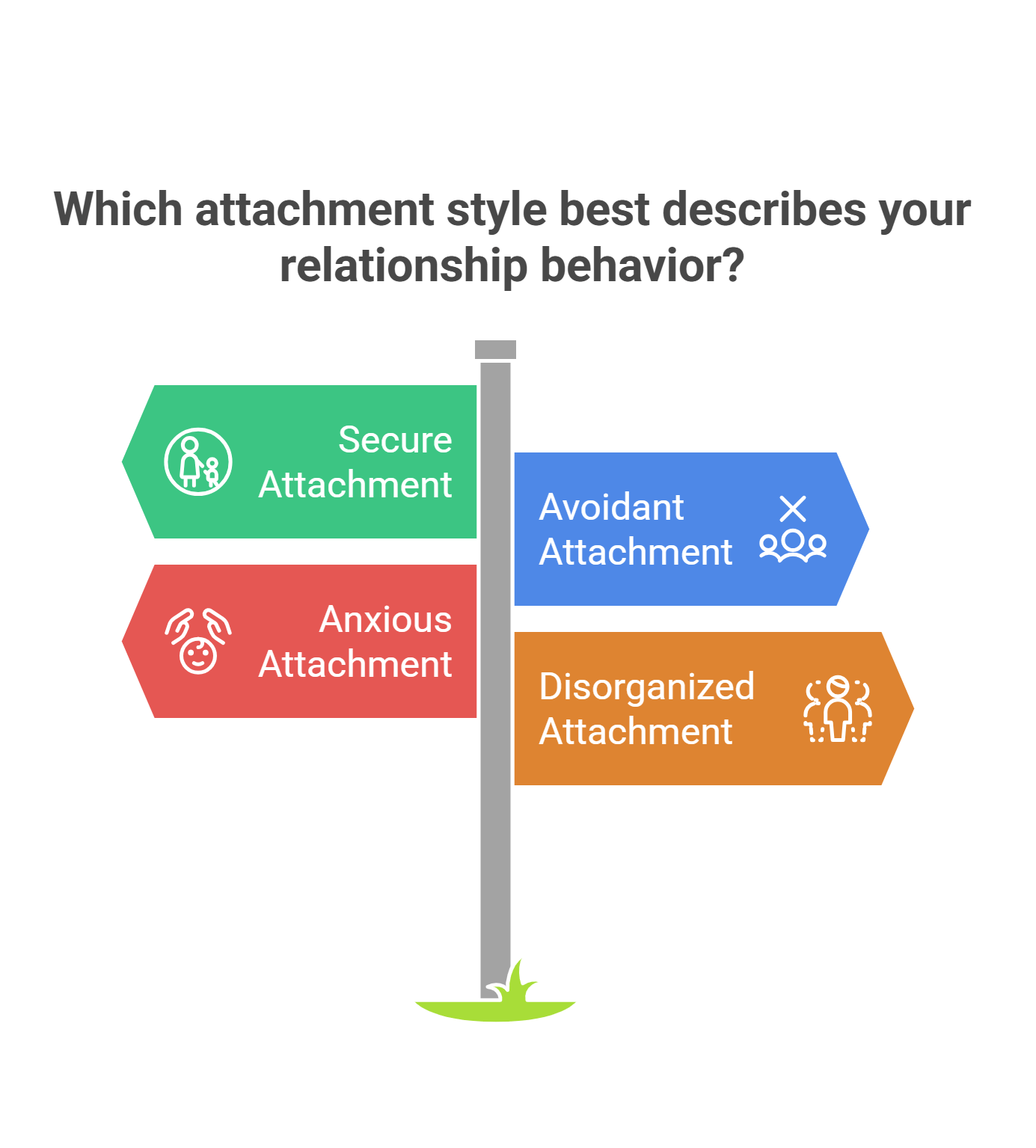
3. Erikson’s Psychosocial Stages
Erik Erikson proposed eight stages of psychosocial development, each centered around a conflict that shapes personality and behavior.
- Key Stages:
- Trust vs. Mistrust (0–1 year): Developing a sense of trust in caregivers.
- Identity vs. Role Confusion (12–18 years): Exploring personal identity.
- Generativity vs. Stagnation (40–65 years): Contributing to society or feeling unproductive.
📘 Example: Adolescents navigating identity formation may experiment with different roles and beliefs.
Explained Simply: Erikson’s stages are like chapters in a book, with each conflict shaping the protagonist’s journey.
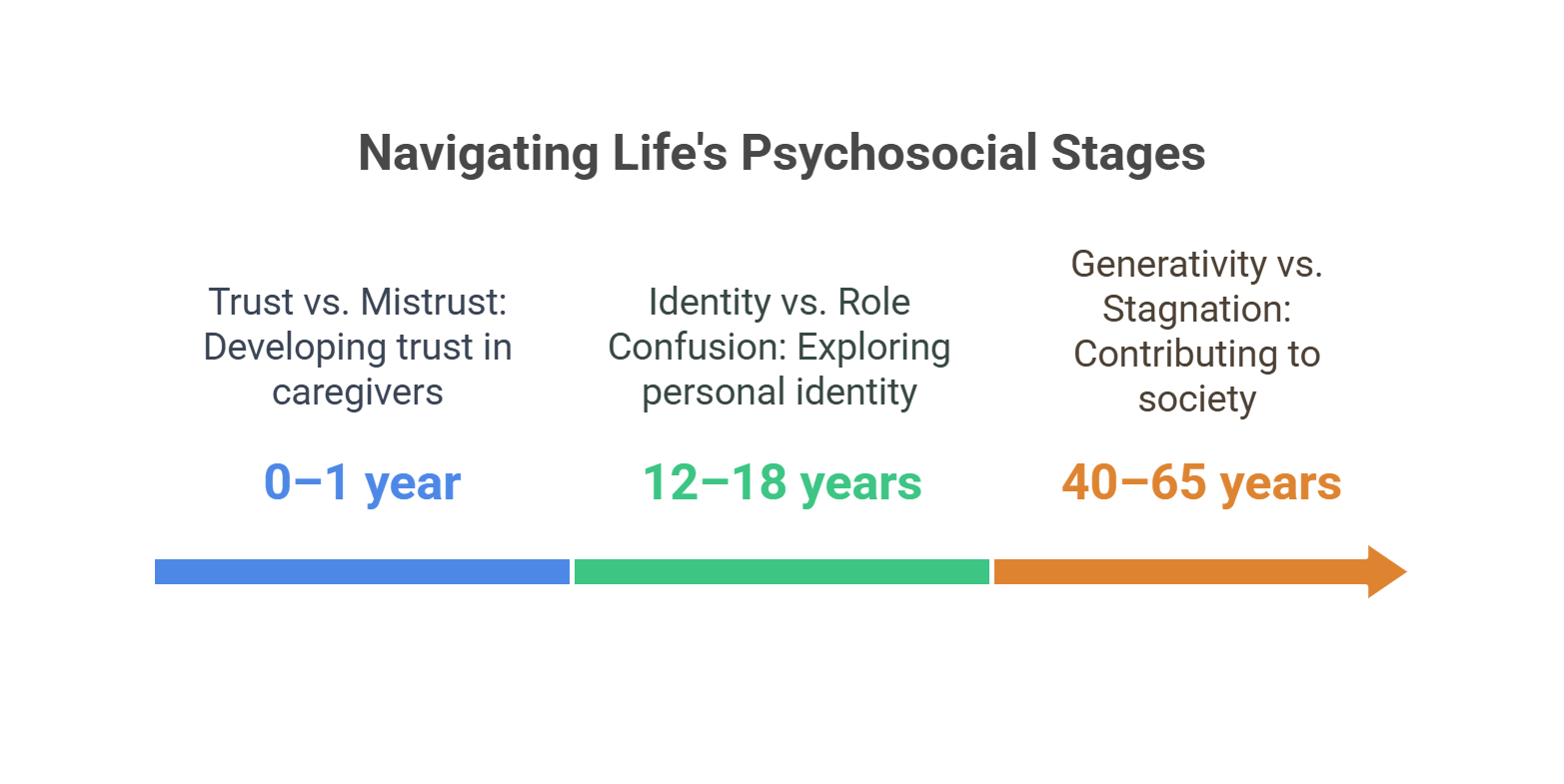
4. Nature vs. Nurture
This debate explores whether genetics (nature) or environment (nurture) plays a greater role in shaping human development. Most modern psychologists agree on an interactionist approach, emphasizing both.
- Nature: Biological inheritance, such as temperament or genetic predispositions.
- Nurture: Environmental influences, such as parenting and cultural factors.
📘 Example: Intelligence is influenced by both genetic potential and educational opportunities.
Explained Simply: Nature vs. nurture is like baking a cake—genes are the ingredients, and the environment is the chef.
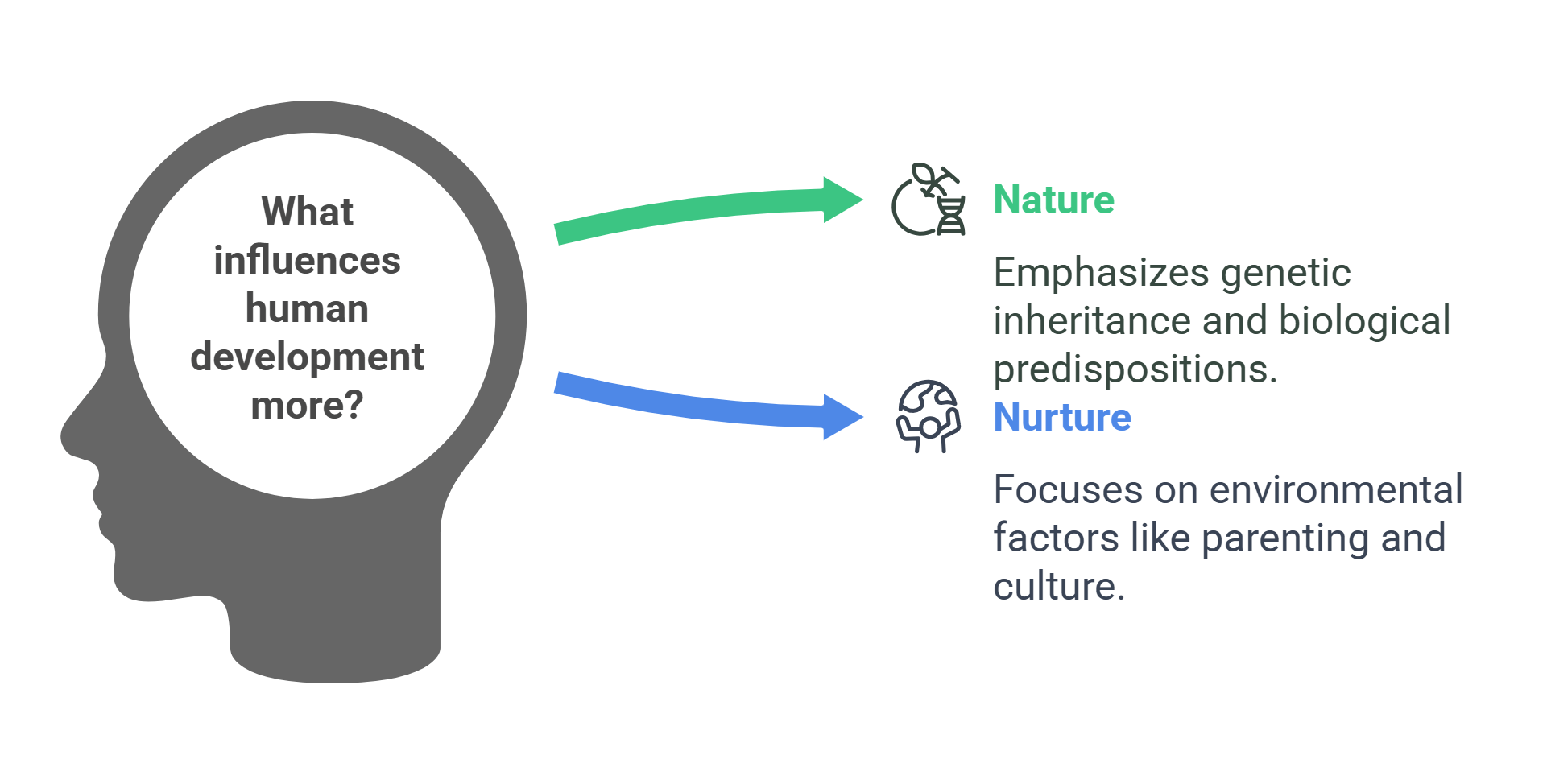
5. Parenting Styles
Diana Baumrind identified four primary parenting styles that impact a child’s emotional and social development:
- Styles:
- Authoritative: High warmth, high control; leads to well-adjusted children.
- Authoritarian: Low warmth, high control; results in obedience but lower self-esteem.
- Permissive: High warmth, low control; often leads to impulsive behavior.
- Neglectful: Low warmth, low control; associated with poor developmental outcomes.
📘 Example: An authoritative parent enforces rules while encouraging open communication.
Explained Simply: Parenting styles are like different coaching methods—each shapes the player (child) differently.
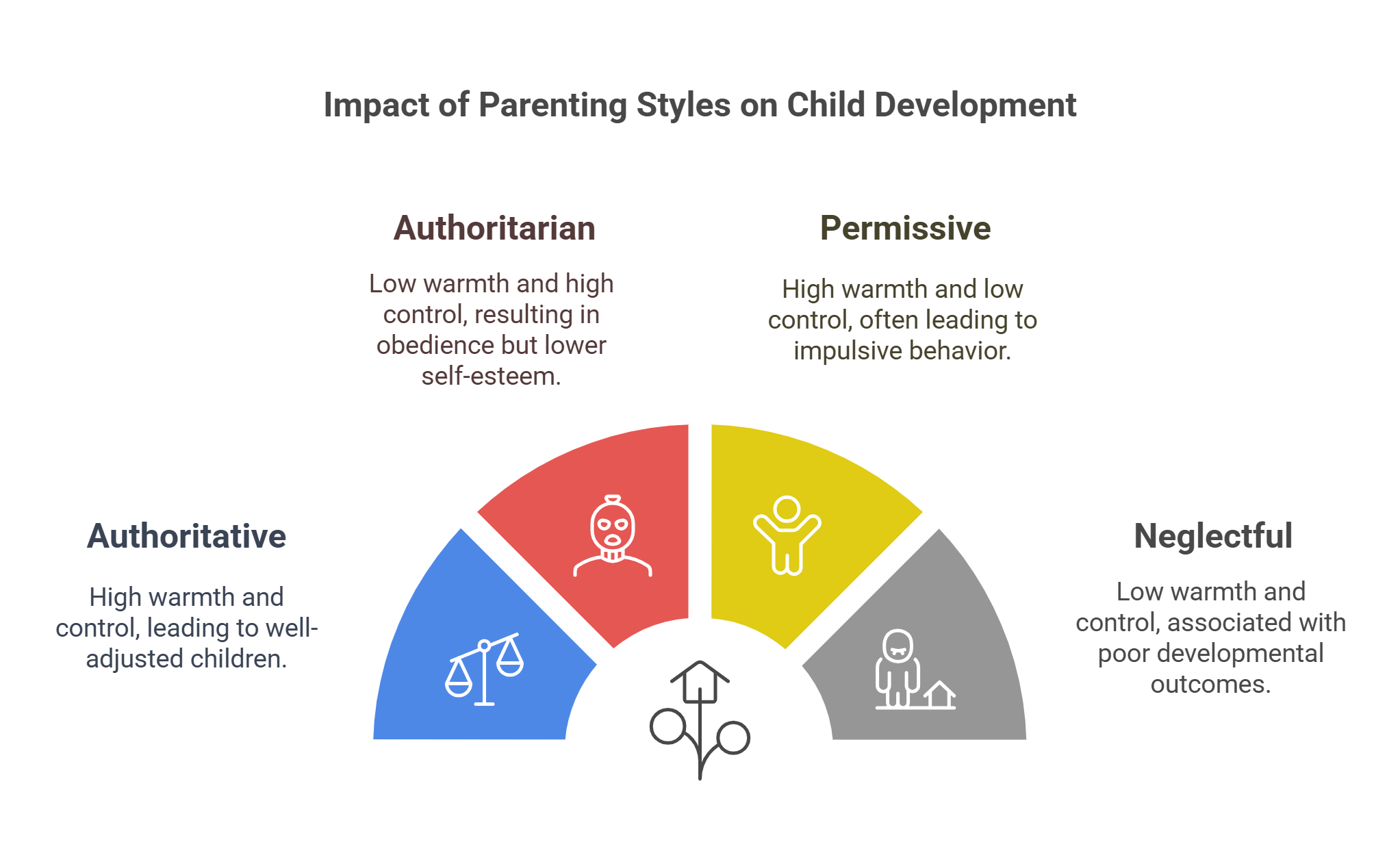
6. Critical Period Hypothesis
The critical period hypothesis suggests that certain abilities, such as language acquisition, are best developed during specific windows of time in early life. Missing these periods can result in limited skill development.
- Key Insights:
- Language learning is most effective before puberty.
- Sensory development requires early stimulation.
📘 Example: Children deprived of social interaction during critical periods may struggle with language later in life.
Explained Simply: Critical periods are like planting seasons—miss the window, and growth becomes difficult.
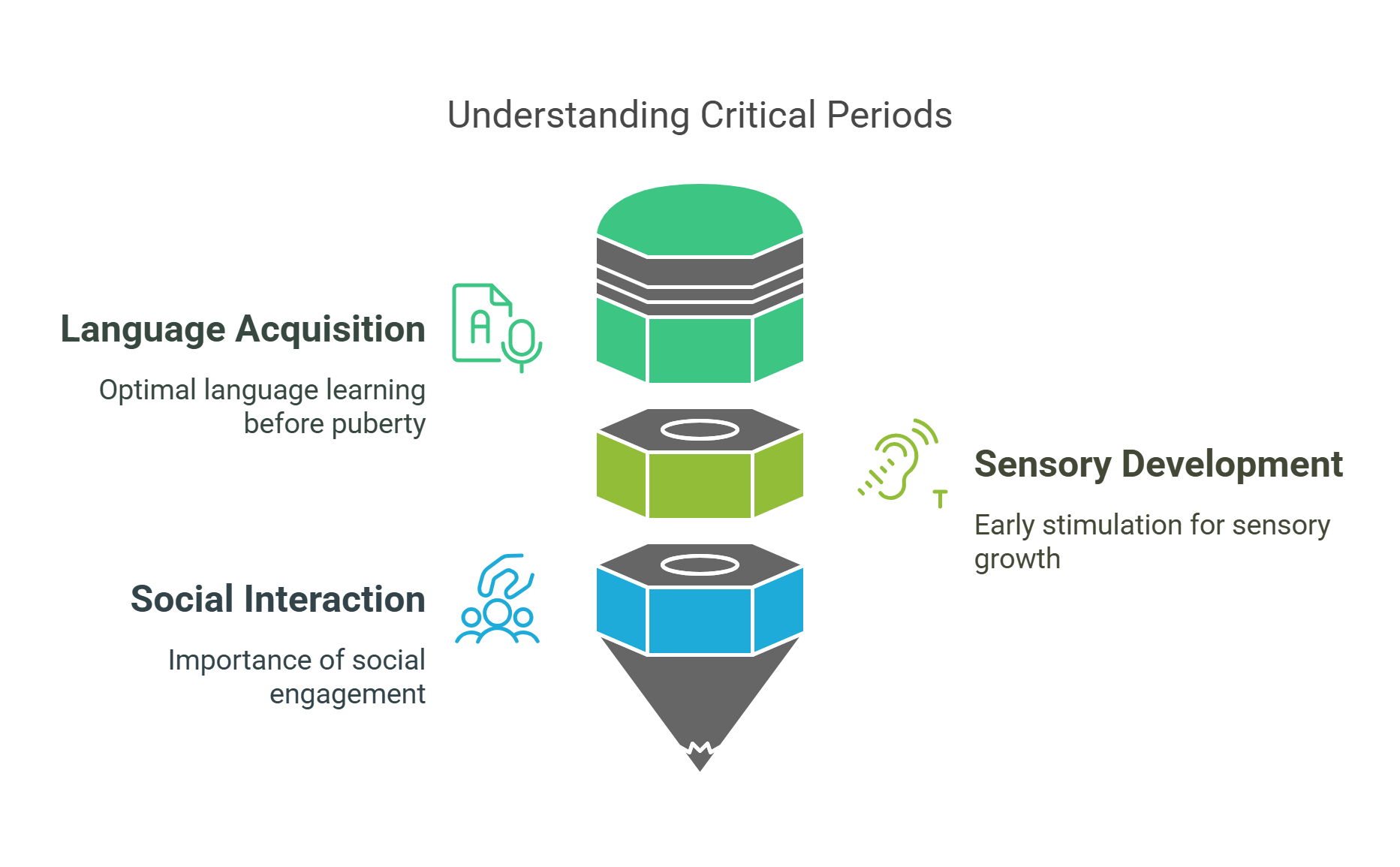
7. Kohlberg’s Moral Development
Lawrence Kohlberg outlined a theory of moral reasoning that progresses through three levels:
- Stages:
- Preconventional: Focus on rewards and punishments.
- Conventional: Adherence to social rules and approval.
- Postconventional: Guided by abstract principles like justice.
📘 Example: A child in the preconventional stage may avoid stealing to escape punishment, while an adult in the postconventional stage rejects theft based on ethical principles.
Explained Simply: Kohlberg’s stages are like the growth of a tree’s roots—from shallow to deeply grounded in moral reasoning.
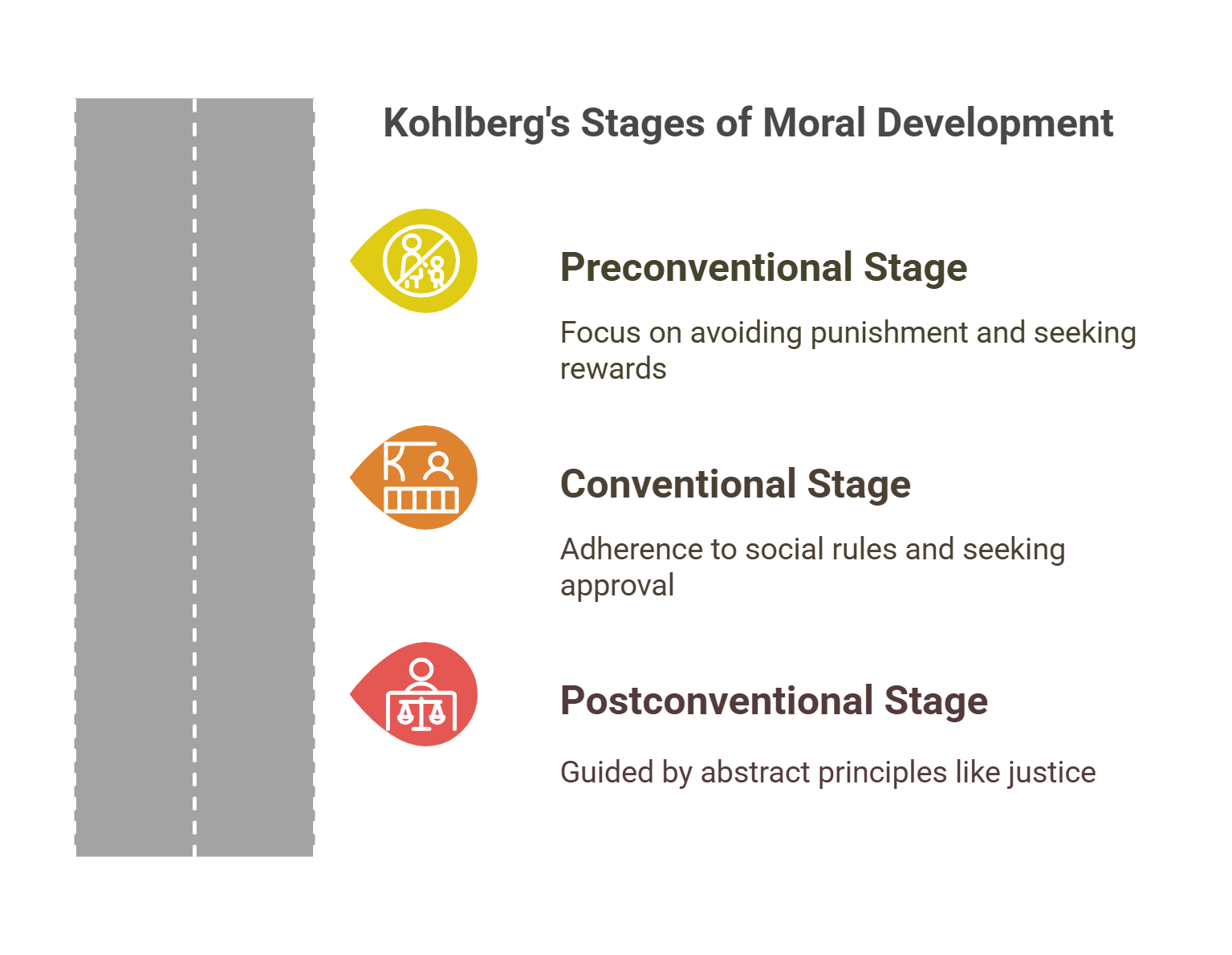
8. Adolescent Egocentrism
Adolescent egocentrism, a term coined by David Elkind, refers to teenagers’ heightened self-focus and belief in their uniqueness.
- Key Features:
- Imaginary Audience: Belief that everyone is watching them.
- Personal Fable: Perception of being special or invulnerable.
📘 Example: A teenager refuses to wear a certain outfit, thinking everyone will judge them.
Explained Simply: Adolescent egocentrism is like being the star of a personal drama where everyone else is an audience.
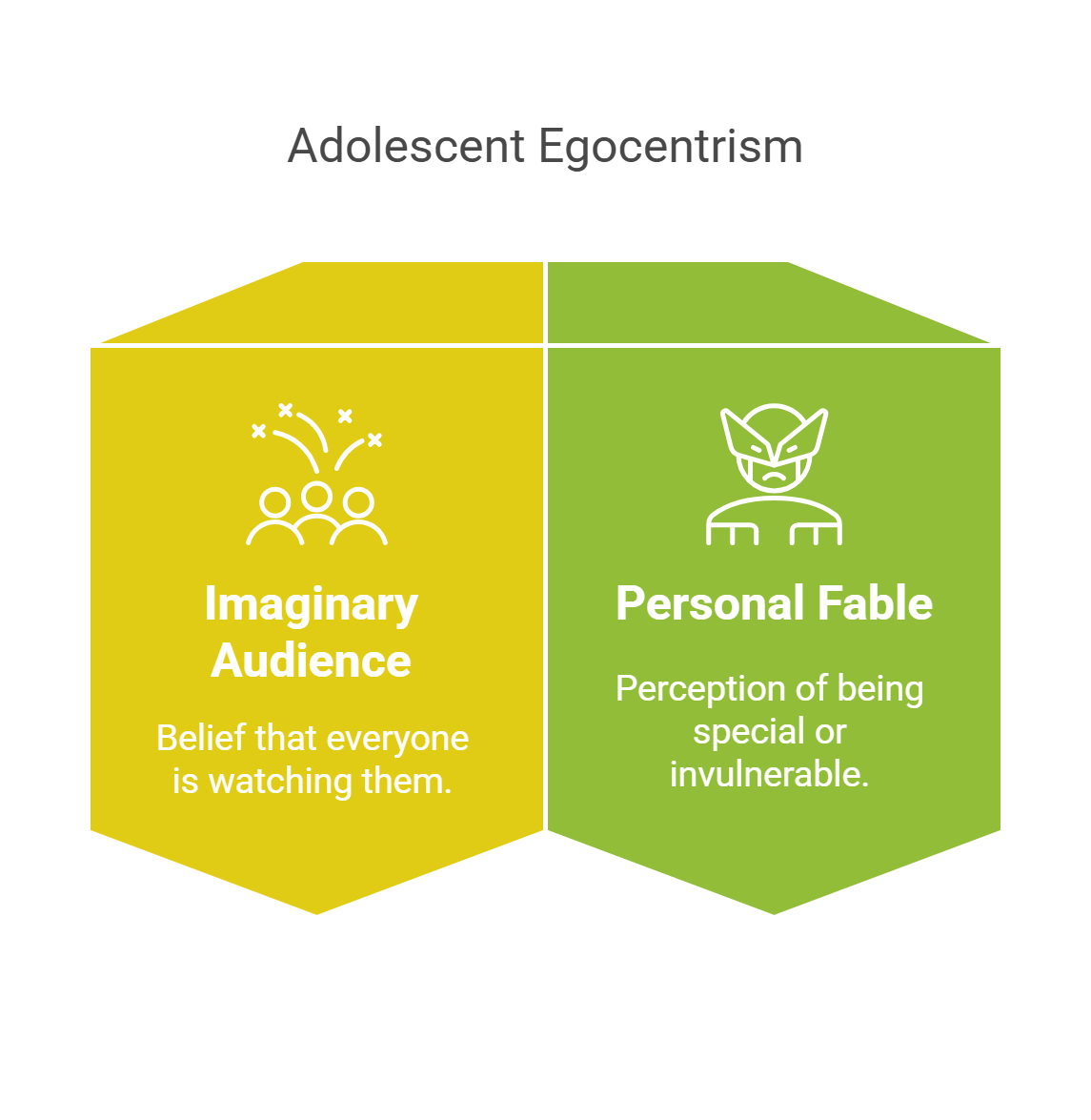
9. Neurodevelopmental Disorders
Neurodevelopmental disorders affect brain development, impacting cognitive, social, and emotional functioning.
- Common Disorders:
- Autism Spectrum Disorder (ASD): Challenges in communication and social interaction.
- ADHD: Difficulty with attention, impulsivity, and hyperactivity.
- Dyslexia: Difficulty with reading and language processing.
📘 Example: Early intervention programs help children with ASD develop social and communication skills.
Explained Simply: Neurodevelopmental disorders are like traffic jams in brain development, slowing or redirecting normal pathways.
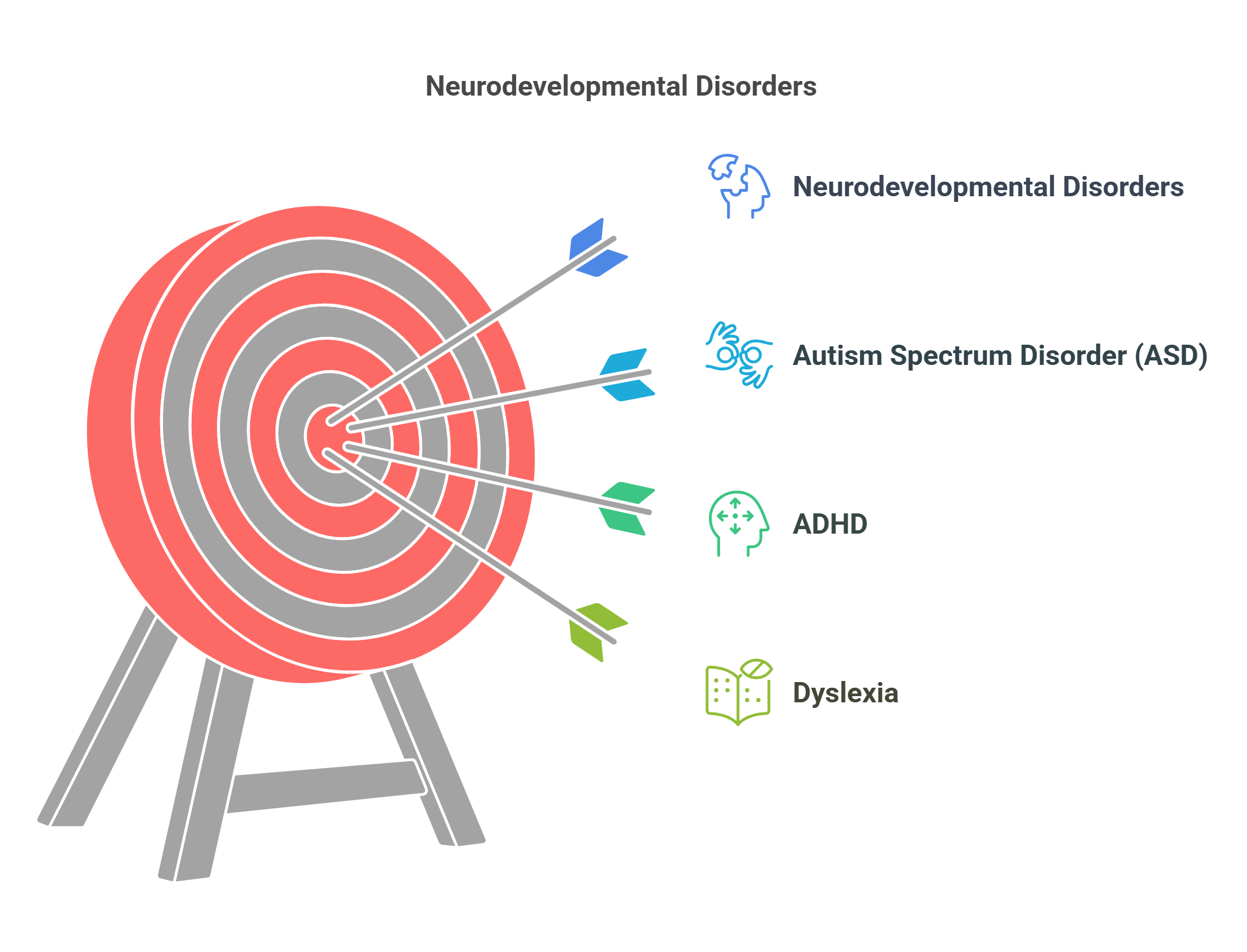
10. Theory of Mind
Theory of Mind (ToM) is the ability to understand others’ mental states, such as beliefs, desires, and emotions. This skill typically develops by age 4–5 and is crucial for social interactions.
- Applications:
- Explains why children with ASD often struggle with social cues.
- Used to study empathy and deception.
📘 Example: A child with developed ToM realizes their friend might feel sad even if they themselves are happy.
Explained Simply: Theory of Mind is like seeing the world through someone else’s eyes, helping you connect with their thoughts and feelings.
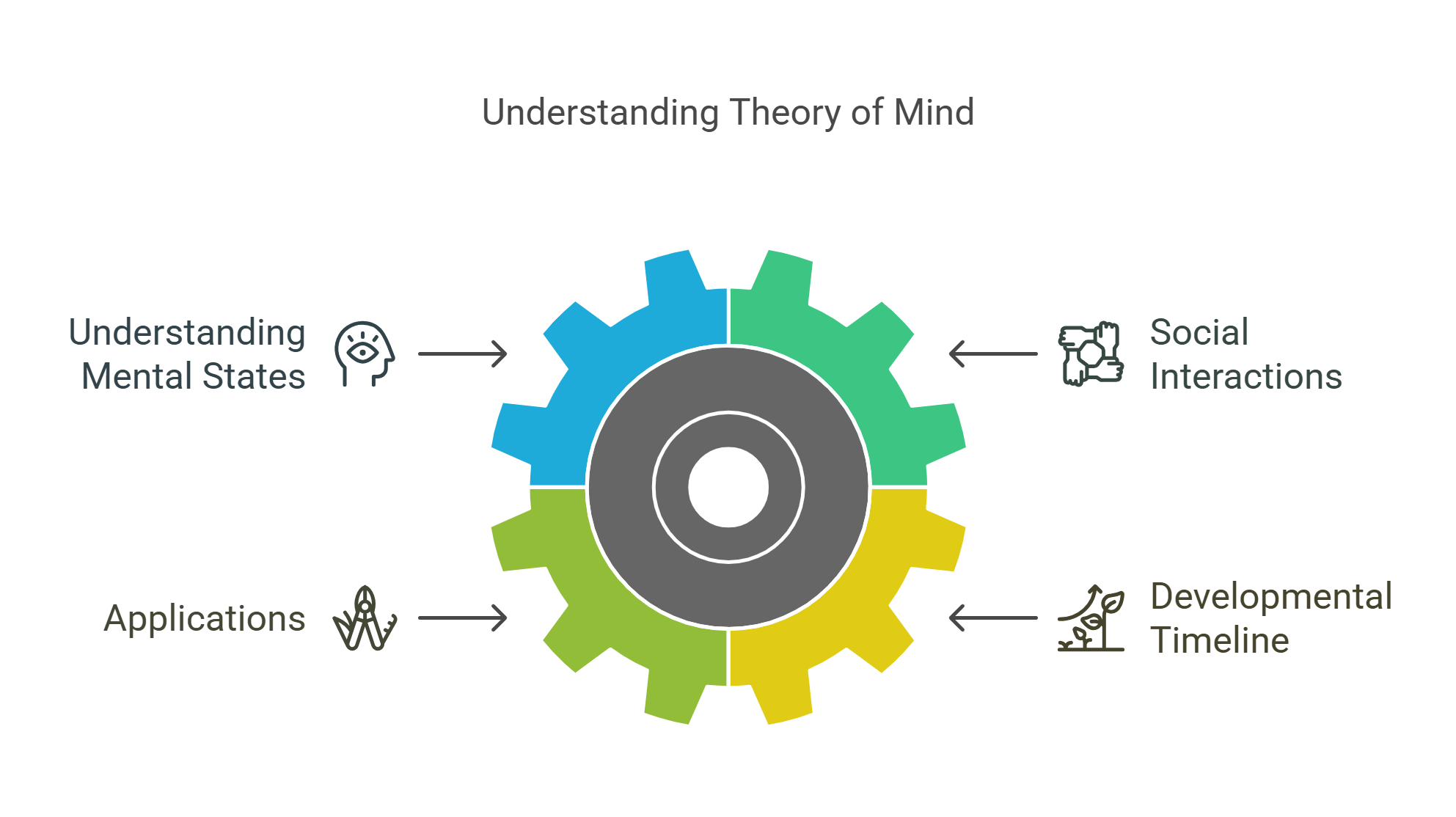
✨ Conclusion
Developmental psychology provides profound insights into the milestones and processes that shape human growth. By understanding concepts like Piaget’s stages, attachment styles, and the critical period hypothesis, readers can analyze RC passages more effectively. This knowledge enriches our understanding of how humans evolve across the lifespan, emphasizing the intricate interplay between biology, environment, and experience.










